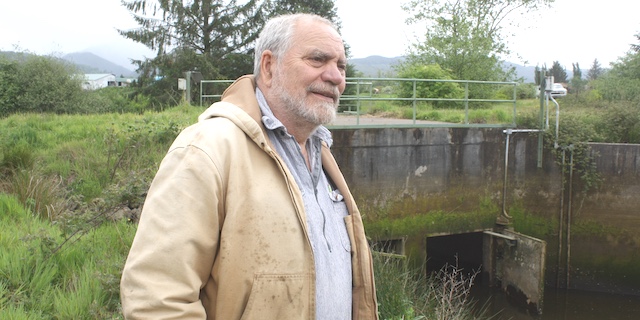Dry conditions lead to deep seeding, partial stands for wheat farmers
Published 5:15 pm Wednesday, October 13, 2021

- Bill Schillinger, director of the Washington State University dryland research station in Lind.
LIND, Wash. — Seeding conditions remain exceptionally dry as farmers in much of Eastern Washington’s dryland region try to plant winter wheat.
“I mean, really, no rain at all between April, May, June — that is a tough one,” said Bill Schillinger, director of Washington State University’s dryland research station in Lind, Wash. “Those months are so important for precipitation on any crop, but to get nothing and then that high heat. Bad, bad crop year.”
Usually, farmers plant wheat seed 4 to 5 inches deep, depending on water availability and soil temperature.
“Typical is no deeper than you really need to,” Schillinger said.
Some farmers have tried going as deep as 7 inches.
“It all depends on the water potential at seed placement, as well as what water potential you have below that seed, for roots to go into,” Schillinger said.
Schillinger reported some good stands of wheat in the Ritzville area. More common are growers re-seeding partial stands or those for whom the ground is just too dry.
The earlier the stand, the better the yield potential, he said.
Researchers at the station measure seed zone moisture at one-inch increments. Schillinger’s measurements at Lind and Ritzville showed there wasn’t a lot of water below seed placement.
Two-tenths of an inch of rain Sept. 10 didn’t help. It led to crusting on the soil surface, Schillinger said. Crusting makes it more difficult for a wheat plant to emerge.
The affected area includes Franklin, Benton, Adams and Lincoln counties, Schillinger said.
Conditions are so dry that Schillinger and other researchers didn’t plant any winter wheat at the Lind station.
The station had 5.35 inches of precipitation for the crop year, the fourth-lowest in its history. The lowest is 1977 with 4.36 inches.
“About half an inch fell in August, in small doses, which is just worthless. It evaporates,” Schillinger said.
Instead, they planted winter peas, which have emerged from the soil, but Schillinger said that’s not necessarily a viable option for farmers due to low prices.
“This doesn’t happen all that often,” he said. “This year was just really dry.”
Schillinger points to predictions of a wet winter as a hopeful sign.
“Farmers are resilient,” he said. “Thank goodness for federal crop insurance.”






